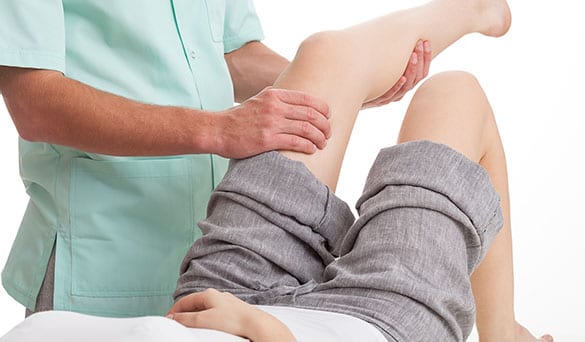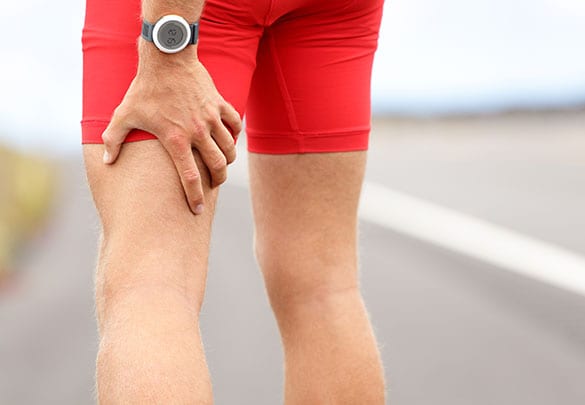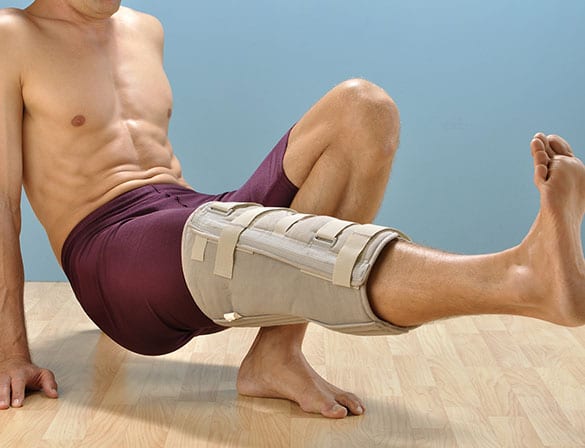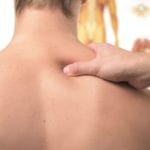
Many patients respond well to non-surgical treatments of Hamstring Strain.
The three hamstring muscles that run down the back of thighs (semitendinosus, semimembranosus, and biceps femoris) perform many important functions, including providing support to the legs and lower back. Because of their prominent location, these three muscles are susceptible to strain.
- Often experienced by athletes who perform repetitive movements (running, skating, playing football)
- The strain can be distracting, but most respond to non-surgical treatments
CONTACT US TODAY
Symptoms
When a hamstring muscle is strained, there is too much pressure being exerted on it or it’s being stretched beyond its normal range of motion. This overloading may result in a muscle strain. Hamstrings often become overloaded at the moment when the back of the leg is straightened. Tight quadriceps in the front of the thigh may also contribute to a strain. The affected tissues often become inflamed or irritated. A strain may affect any part of a hamstring muscle, including the point where the muscle connects to bone. The following symptoms may be experienced with a hamstring strain:
- Sharp pain in the back of the thigh
- Discoloration, bruising, or redness
- Tenderness around the area where the hamstrings are
- Pain felt in the lower buttocks or back of the thigh when walking
- Persistent weakness in the hamstrings lasting more than a few weeks


How it’s Diagnosed
The affected thigh is checked for tenderness and swelling. After an examination, image testing is usually done to confirm the strain and determine if there is other damage to tissues. An X-ray will show whether or not there is avulsion (when the hamstring pulls a small piece of bone away). An MRI scan will show the extent of any soft tissue damage from the strain.
Available Treatment Options
Initial treatment for a hamstring strain typically involves rest to allow the muscle to heal and anti-inflammatory medication to reduce swelling. Crutches may be used to keep weight off the affected leg. Ice eases the swelling and should be applied for about 15-20 minutes at a time, but not directly to the skin. An elastic compression bandage may be worn around the thigh to minimize swelling. Elevating the leg higher than the heart can help with circulation. Immobilization is also sometimes recommended, and various forms of physical therapy may also help restore full function to hamstrings.
When Surgery is Necessary
If a hamstring muscle is torn or if a piece of the bone has broken off, surgery will be necessary to repair the damage. Large stitches or staples are used to reattach a muscle to the bone. Scar tissue is also removed. If the muscle itself is torn, it will be surgically sewn back together. Most people are able to return to their normal activities after rehabilitation.
Stretching is the most effective way to prevent hamstring strains. Stretches can be as basic as bending your knee backwards and leaning forward on your hips. Giving your muscles time to rest and heal between activities, watching your posture, paying attention to proper form while exercising or playing sports, and drinking plenty of water can also help keep hamstring muscles and nearby tissues healthy and reduce the risk of strain.




